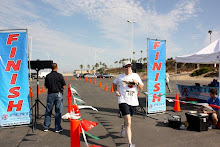Although Los Angeles had been known as a "hot bed of secession," the harbor area was jubilant at the end of the Civil War and the prospect of peace. In April 1865, a correspondent from the San Francisco Bulletin reported that "On the receipt by telegraph of the occupation of Richmond, 100 guns were fired in Wilmington, and crowds of the right kind of people perambulated the streets with torches, while the town was as bright as day with bonfires."
Wilmington is near San Pedro and is part of the Los Angeles Harbor area.
As seen throughout the country, however, this jubilation quickly turned to grief after President Abraham Lincoln was shot and died shortly thereafter on April 15, 1865. When the telegraph of Lincoln's assassination reached Wilmington, businesses and public houses were closed and hung with crape by grief-stricken residents.
General Phineas Banning, a successful businessman known as the "father of Wilmington," ordered his employees to suspend work on the day of Lincoln's funeral. The "heavy blows usually resounding in Banning's huge blacksmithing establishment" were temporarily silenced, and other locals followed this example and suspended work.
The Bulletin's correspondent noted that on the sacred day of Lincoln's funeral "not even a team or pleasure wagon was to be seen leaving the little town" and "it was a strange sight to see billiard tables and card-tables utterly deserted among so fun-loving a population as Wilmington contains."
While General Banning and the whole of Wilmington's population was described as having "shown themselves the true stuff," the local establishment of Tomlinson & Co. was criticized for being "utterly indifferent to the great national calamity that had just taken place" by continuing work with all their men until dark after news of Lincoln's funeral arrived -- unlike A.W. Timms who instantly closed his store and trimmed his whole establishment with black.
Wednesday, March 31, 2010
Saturday, March 13, 2010
Deadman's Island: British Whaling Captain Hanged by Mutineers
Deadman’s Island was a San Pedro landmark, a rocky isle about 800-feet long, 250-feet wide, and over 60-feet high that guarded the entrance to Los Angeles Harbor. It was removed in the late 1920s to make room for large ships in the growing harbor.
The following story is from the Evening News, June 1901:
---
Hanged by Mutineers
Pieces of Rope Found Clinging to Captain's Crumbling Skeleton
San Pedro, Cal, June 7 -- Through the caving down of a bank and the discovery of a mass of crumbling human bones a clew has been bound [sic] to a mystery that has existed for over a century.
A hundred years ago the captain of a British whaling ship, lying off this port, was killed by his crew, which mutinied.
It was known that they buried him on Deadman's Island, but the manner in which they accomplished the killing was kept a secret and, although in later years the subject was one of much inquiry, the direct cause of death was never determined.
Gradually the sea has washed away the base of Deadman's Island, which stands near the entrance to the inner harbor, and the upper part has kept caving away.
A party of boys fishing near the place Wednesday discovered the contents of the grave, which had fallen by the caving away of the bank.
The bones had fallen only a short distance from their resting place, so that the arrangement was only partly destroyed.
Although solid, as if preserved by the dryness of the sandy soil, the bones were greatly yellowed, showing
that they had been resting there probably a hundred years.
Looking more closely the boys found an old rope, rotted with age, wound about the skeleton, between the head and ribs.
The rope was of the size used by hangmen.
The discovery is taken to indicate that the unfortunate skipper was hanged by his crew, and that they buried him without removing the rope, with which he had been hanged.
Sunday, March 7, 2010
"Largest Earthquake in the World" Impacts Los Angeles Waterfront, May 1960
The recent deadly 8.8 magnitude earthquake in Chile caused a tsunami advisory for California's coastline, but fortunately no significant local damage.
It's worth a look back at another Chilean earthquake that generated tsunami wave surges that did cause some damage to California's coastline and the Los Angeles and Long Beach Harbor areas.
On May 22, 1960, a magnitude 9.5 earthquake struck south central Chile. The United States Geological Survey calls this "the largest earthquake in the world." In Chile, approximately 2,000 people were killed, 3000 injured, and another 2,000,000 were left homeless.
The Governor's Office of Emergency Services for California estimates that the waves generated by this massive earthquake caused about $500,000 to $1,000,000 worth of damage to the state, and notes that two people were killed.
Locally, the Los Angeles Times reported that boats and piers were smashed along San Pedro's waterfront, where a series of tidal currents surged back and forth surged through the port's narrow Cerritos Channel. Some 300 yachts and small boats were ripped from their slips, and early estimates were that 15-20 boats had sunk. The surge was estimated at up to 8-9 feet high in places at times. A strong current caused the port's Terminal Island ferry Islander to be swept off course by 300 yards, while "monumental traffic jams" occurred in both the Los Angeles and Long Beach harbor areas.
A Port of Los Angeles report states that the "Chilean earthquake and tsunami of May 1960 was the maximum event recorded in recent history to impact the Ports."
For more on this devastating earthquake, click on this link:
http://earthquake.usgs.gov/earthquakes/world/events/1960_05_22_articles.php
*Stay tuned for future blog entries on other tsunamis that impacted the Port of Los Angeles.
Subscribe to:
Posts (Atom)


